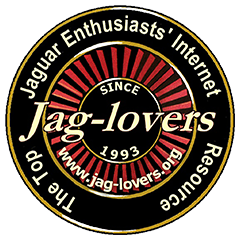To all:
In past postings I have written about body alignment methods. I thought
it would be a good idea to describe some disassembly techniques which
ease the the task of putting the body back in alignment.
But first lets establish a body classification scale so that we can
visualize the approximate condition of the XK body that I describe.
Class 1 – A dry state car, or a limited summer use only car which was
always garaged. Very little rust is present some internal structual
seams might bleed rust a little after getting wet.
Class-2 A car that has been in dry and wet states, sometimes garaged,
sometimes not. Rust is present in the sills and shut pillars. The cowl
support structure where it attaches to the sills is rusted. The leaded
seams of the headlight pods are swollen from sandwich rust. The parking
light pods are rusted out ,including underneath them. The boot floor and
battery boxes need replacement or repair. Some of the lower outer body
skin will have to be replaced.
Class-3 A wet state car that has been left outside for a long period of
time. A surface rust is present on most of the internal and external
sheetmetal. The sills and shut pillars have rusted heavily . The rear
inner fenders are rusting at the bottom and top edges. The boot area is
rusted severely. The parking and headlight pods are rusted through
including underneath them. The firewall lower edge is rusted. The cowl
support stucture is heavily rusted. All outer body work is rusted in the
lower regions.
In a effort to simplify I have chose to ignore the issues of light,
moderate, or heavy use and prior accident damage, all of which greatly
affect the overall condition of the car.
On class 2 and 3 condition cars , that need sill and shut pillar
replacement, usually they will also need door hinge rebuilding and cowl
support structure repair or replacement.
These tasks can be accomplished much easier if you remove the front
fenders first. Before removing any panel from the car photograph it from
several different angles. If the lines of the car are still good you can
make a drawing and take measurements from several different angles.
Record them on the drawing with notes if neccessary.
The fenders are joined at the lower leading edge by a joining panel.
Strip all paint from the area and remove with a torch any lead that
might be present. This is done with a aceytlene torch with a light flame
fanned over the area until the lead starts to liquify ( around 500
degrees Fahrenheit) , simply wipe the lead off with a rag or paper
towel. Hand, eye, and lung protection should be used. After the lead is
wiped off a residue will remain. The residue will interfere when you
weld the joining panel back together. The residue can be removed by
using a strip-it wheel. These are available at your local bodyshop
supplier. They are a flexible nylon abrasive impregnated mesh wheel,
three inches in diameter ,1/2″ wide . You use them on a arbor chucked
into a hand-drill.
The fenders have a recessed spot welded seam at the upper cowl area.
Paint remove the area and wipe out the lead from the recessed joining
seam. Clean the seam throughly using the strip-it wheel. The spot weld
depressions should be visible, Mark them with a magic marker so that you
can see them easily. Using a 1/8″ drill bit, drill a hole right through
the seam at the begining, middle and end. These holes will act as index
points to allow you to reattach the fender in exactly the same spot on
the seam. (When reassembling simply use a pop rivit to align the the
panels back together again. Re-spot weld the seam ,drill out the pop
rivits and then close the holes with weld.) Use this alignment hole
techique also on the hinge panel. Drill a series of 1/8″ holes along the
welded lip about four inches apart. After you have all your alignment
holes drilled remove the spot welds.
Spot welds try your patience severely, but you must resist the
temptation to ” do it a easy way instead of removing these dam countless
spotwelds”. You can erode the spot welds away with a carbide burr 3/8″
dia. ball in a air die grinder, drill them out, or use one of the
several special tools designed for the task available at your local
autobody supply house. I’ve tryed everyway and I haven’t found a quick
way yet.
Next unbolt the fender, this varies with each model but it usually is an
easy task. Remove the front fender and the rear fender. Now you have a
clear working zone, everythings exposed . Unbolt the door hinges and
remove them. Locate the spot welds that secure the cowl support
stucture to the firewall. Mark the spot welds and undo them, totally
free the cowl support stucture from the firewall and cowl assembly.Prop
up the cowl stucture to support its weight. Next using a cutoff wheel
air tool ( a 1/32″ thick abrasive 3″ dia cutoff wheel) cut off the
leading edge of the rear inner fender. Undo the welds at the top of the
shut pillar, where it joins the upper pillar area. Remove the
floorboards. After you have unbolted the sill and pulled out any wires
that might be inside them, simply remove the whole assembly – cowl
support stucture, sill,and shut pillar. If the assembly is not severely
distorted from rust you still have a good reference tool to aid in the
installation of the new assemblies.
To be continued….
Regards,
Wray E. Schelin
WES PARTS Phone 508 347-7749 e-mail wesparts@hey.net P.O.Box 652 I fabricate a full line of XK sheetmetal parts
Charlton City, MA 01508

